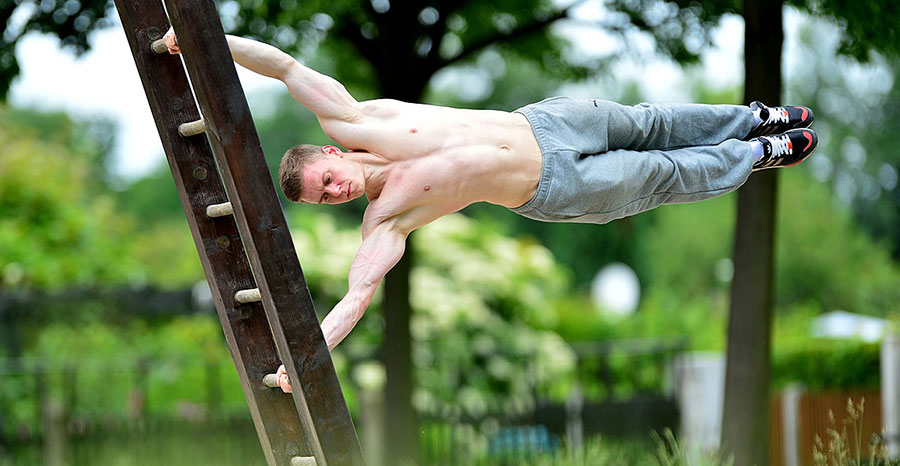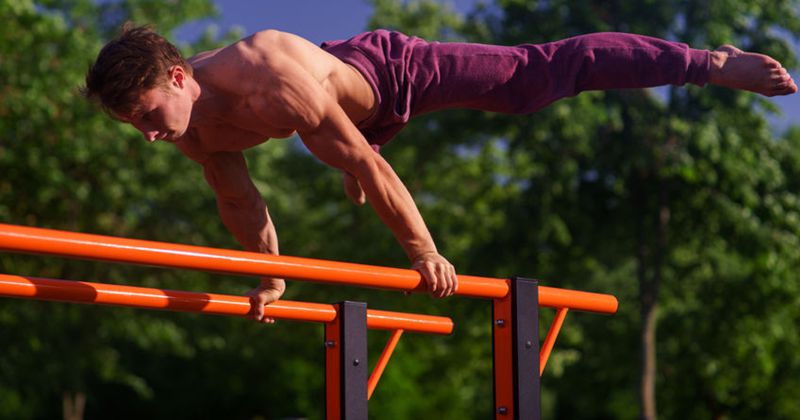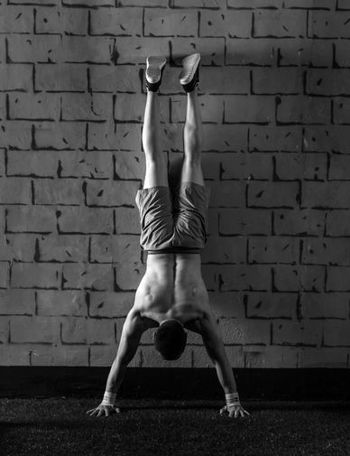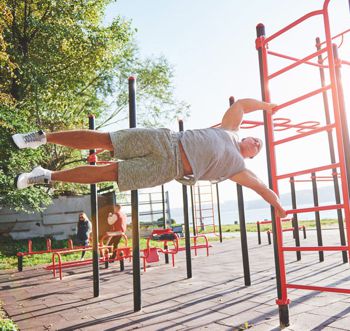
Body Weight Training 2.0: Calisthenics
Some time ago I wrote a post on body weight training, but the focus of that article was for travelers who may not have access to a gym. In this post, we’re going to explore bodyweight training methods that are done, not due to a lack of gym equipment, but because they are highly effective at building strength, muscle tone, dexterity, and balance.
First, I have to come clean and admit that until recently, I thought bodyweight exercise was for wimps. I would see people in the gym doing pistol squats or flexibility exercises on those annoying exercise balls that always seem to be in the way, and I would silently scoff at them, thinking, “Look at your body, then look at mine. Which method do you think works?” Then I would go back to lifting weights, convinced of the superiority of my methods.
Then I discovered calisthenics.
SuperHuman Feats of Strength

Have you ever seen someone do a Planche Pushup? That’s where they do a pushup, but their feet aren’t touching the ground. The body is planked and parallel to the ground. The only point of contact is the hands. Then there’s the Australian Pushup. Yeah, I know, another ‘down under’ joke. Don’t hate me. I didn’t name them. An Australian Pushup is the reverse of a Planche Pushup. Hang by your hands from a chinning bar, then raise your body until it is planked and parallel to the ground. Now raise and lower your body. If you prefer, an Australian Pushup is also called a Front Lever. Not as catchy, though, is it?
Then there’s the Human Flag, another very impressive bodyweight move that you’ve likely seen online. A person grasps a vertical pole with a wide grip, then raises their body until it’s parallel to the ground. For extra “Wow!” factor, sometimes another person will stand on them while they’re doing this.
Not Just For Men
While mostly men do these exercises, some women can do them as well. It’s not about raw strength, but rather the ratio of strength to body weight. And that right there is the best reason to pursue this kind of training. Unlike traditional resistance training with weights, where you can lift impressive weights regardless of your body composition, I promise there is no way you’ll be doing these moves if you’re carrying excess body fat. The difference between being able to do a Planche Pushup and popping a blood vessel in your eyeballs trying can literally be a couple of kilos of body fat. And lest you think the bit about popping a blood vessel is a joke – Nope. That’s what happened to me the first time I tried it. I am not kidding. I had a red spot in my eye for days.
Working Up To It

Unless you are genetically gifted, you can’t just go and do any of these or a number of other body-weight-only moves. Just like anything else, you have to train for them. It requires an impressive power to weight ratio to pull off these moves. But unlike many other impressive feats of strength, you need nothing but body weight to train for these. Well, body weight and a chinning bar, unless you’ve somehow mastered levitation.
The Methodology
As with any kind of resistance training, you have to build up to the goal gradually. Every one of these bodyweight moves can be broken down into easier, more basic steps. You find your starting point and go from there, gradually increasing the number of reps you can do. Once you reach a certain number of reps, usually in the range of 10 to 12, you’re ready to move to the next step – one step closer to the ultimate goal.
As an example here’s how to build up to a Planche Pushup.
Step 1: Do a pushup. Obviously, if you can’t do normal everyday pushups, you won’t be able to do a Planche Pushup. Make sure your pushups are being done with clean technique. Your body should be perfectly planked, and each rep should go to a full extension. Touch your nose to the ground at the bottom of each rep, and lock out your elbows at the top.
Step 2: Start moving your hand position lower down your torso. This part is self-regulating. You’ll quickly discover the hand position where you can do a maximum of 12 reps. Move your hands down a little farther until you can only do 8 reps. Work that position until you can do 12, then move your hands down again. Eventually, you’ll start getting close to your center of gravity, down around your hips, and you’ll feel that some of the weight you’re lifting is your legs.
Step 3: Get into pushup position with your feet against a wall. Place yourself just far enough from the wall that you have to extend the balls of your feet slightly to make contact with the wall. Now lift the balls of your feet until they are about 30 cm off the floor. Apply enough pressure that your feet ‘stick’ to the wall while you do a pushup. From this position, you’ll almost certainly have to move your hand position back up toward your chest in order to be able to do 12 reps. Find that position, then repeat Step 2 above, gradually moving your hands back toward your center of gravity until you feel that you are bearing most of the weight of your entire body.
Step 4: The same as step 3 but this time only place the ball of one foot against the wall. Keep the other leg floating free and in a plank position as you do the pushups. Alternate legs and work this until you can do 12 reps. This time you’ll keep moving your hands down toward your center of gravity until you feel your foot that is against the wall beginning to float free. You’re almost there.
Step 5: Do one, just one, Planche Pushup. Despite all the training you’ve done to get to this point, it’s going to be very hard to do. If you can do more than one, that’s great but even doing one is exceptional. Keep alternating between full Planche Pushups and the one-foot-on-the-wall method in Step 4 until you can do at least 3 or 4 Planche Pushups in a row.
Be Patient
Note that it will likely take months, or even years to achieve success, depending on your starting point. Be patient and enjoy each new success. What you’re trying to do is exceptionally difficult and only a vanishingly small percentage of people will ever be able to do what you’re doing. And if you get there, be proud of your achievement. You’ve joined the elite in terms of power to weight ratio.

Also, keep in mind that the lower your body weight, the easier these exercises will be. We’ve got a number of posts here on fat loss and preserving muscle while losing fat. These are a good starting point if your body weight is an issue.
Thenx.com
While I’ve provided an example above, if you’re interested in pursuing superhuman feats of strength in calisthenics, I strongly recommend visiting thenx.com. Chris Heria and his fellow trainers will show you how to do a bodyweight workout that will make most people’s weight workouts look easy. They also show you step-by-step (with videos) how to build up to Planche Pushups, Australian Pushups, Human Flags, Muscle Ups, Handstands and more. I get nothing from recommending thenx.com. It simply is the very best guide I’ve found for mastering these impressive techniques, and getting into great shape while you’re at it.
Will Dove
Latest posts by Will Dove (see all)
- Body Weight Training 2.0: Calisthenics - 22 Apr
- All About Protein Powders - 9 Apr
- Top 5 Fitness Trends for 2019 That You Should Try - 30 Mar
